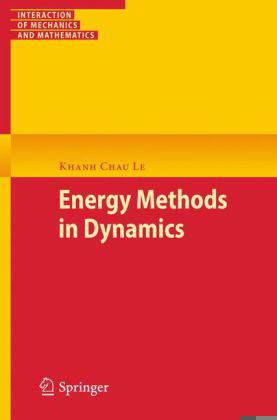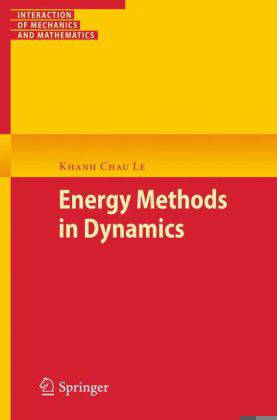
En raison d'une grêve chez bpost, votre commande pourrait être retardée. Vous avez besoin d’un livre rapidement ? Nos magasins vous accueillent à bras ouverts !
- Retrait gratuit dans votre magasin Club
- 7.000.000 titres dans notre catalogue
- Payer en toute sécurité
- Toujours un magasin près de chez vous
En raison de la grêve chez bpost, votre commande pourrait être retardée. Vous avez besoin d’un livre rapidement ? Nos magasins vous accueillent à bras ouverts !
- Retrait gratuit dans votre magasin Club
- 7.000.0000 titres dans notre catalogue
- Payer en toute sécurité
- Toujours un magasin près de chez vous
Description
The above examples should make clear the necessity of understanding the mechanism of vibrations and waves in order to control them in an optimal way. However vibrations and waves are governed by differential equations which require, as a rule, rather complicated mathematical methods for their analysis. The aim of this textbook is to help students acquire both a good grasp of the first principles from which the governing equations can be derived, and the adequate mathematical methods for their solving. Its distinctive features, as seen from the title, lie in the systematic and intensive use of Hamilton's variational principle and its generalizations for deriving the governing equations of conservative and dissipative mechanical systems, and also in providing the direct variational-asymptotic analysis, whenever available, of the energy and dissipation for the solution of these equations. It will be demonstrated that many well-known methods in dynamics like those of Lindstedt-Poincare, Bogoliubov-Mitropolsky, Kolmogorov-Arnold-Moser (KAM), and Whitham are derivable from this variational-asymptotic analysis.
This book grew up from the lectures given by the author in the last decade at the Ruhr University Bochum, Germany. Since vibrations and waves are constituents of various disciplines (physics, mechanics, electrical engineering etc.) and cannot be handled in a single textbook, I have restricted myself mainly to vibrations and waves of mechanical nature. The material of this book can be recommended for a one year course in higher dynamics for graduate students of mechanical and civil engineering. For this circle of readers, the emphasis is made on the constructive methods of solution and not on the rigorous mathematical proofs of convergence. As compensation, various numerical simulations of the exact and approximate solutions are provided which demonstrate vividly the validity of the used methods. To help students become more proficient, each chapter ends with exercises, of which some can be solved effectively by using Mathematica. The most important feature which sets this book from others in dynamics is the systematic and intensive use of Hamilton's variational principle and its generalizations for deriving the governing equations of conservative and dissipative mechanical systems, and also in providing the direct variational-asymptotic analysis, whenever available, of the energy and dissipation for the solution of these equations. It will be demonstrated that many well-known methods in dynamics like those of Lindstedt-Poincare, Bogoliubov-Mitropolsky, Kolmogorov-Arnold-Moser (KAM), and Witham follow from this variational-asymptotic analysis.
The most important feature which sets this book from others in dynamics is the systematic and intensive use of Hamilton's variational principle and its generalizations for deriving the governing equations of conservative and dissipative mechanical systems, and also in providing the direct variational-asymptotic analysis, whenever available, of the energy and dissipation for the solution of these equations. It will be demonstrated that many well-known methods in dynamics like those of Lindstedt-Poincare, Bogoliubov-Mitropolsky, Kolmogorov-Arnold-Moser (KAM), and Witham follow from this variational-asymptotic analysis.
The most important feature which sets this book from others in dynamics is the systematic and intensive use of Hamilton's variational principle and its generalizations for deriving the governing equations of conservative and dissipative mechanical systems, and also in providing the direct variational-asymptotic analysis, whenever available, of the energy and dissipation for the solution of these equations. It will be demonstrated that many well-known methods in dynamics like those of Lindstedt-Poincare, Bogoliubov-Mitropolsky, Kolmogorov-Arnold-Moser (KAM), and Witham follow from this variational-asymptotic analysis.
The most important feature which sets this book from ot
This book grew up from the lectures given by the author in the last decade at the Ruhr University Bochum, Germany. Since vibrations and waves are constituents of various disciplines (physics, mechanics, electrical engineering etc.) and cannot be handled in a single textbook, I have restricted myself mainly to vibrations and waves of mechanical nature. The material of this book can be recommended for a one year course in higher dynamics for graduate students of mechanical and civil engineering. For this circle of readers, the emphasis is made on the constructive methods of solution and not on the rigorous mathematical proofs of convergence. As compensation, various numerical simulations of the exact and approximate solutions are provided which demonstrate vividly the validity of the used methods. To help students become more proficient, each chapter ends with exercises, of which some can be solved effectively by using Mathematica. The most important feature which sets this book from others in dynamics is the systematic and intensive use of Hamilton's variational principle and its generalizations for deriving the governing equations of conservative and dissipative mechanical systems, and also in providing the direct variational-asymptotic analysis, whenever available, of the energy and dissipation for the solution of these equations. It will be demonstrated that many well-known methods in dynamics like those of Lindstedt-Poincare, Bogoliubov-Mitropolsky, Kolmogorov-Arnold-Moser (KAM), and Witham follow from this variational-asymptotic analysis.
The most important feature which sets this book from others in dynamics is the systematic and intensive use of Hamilton's variational principle and its generalizations for deriving the governing equations of conservative and dissipative mechanical systems, and also in providing the direct variational-asymptotic analysis, whenever available, of the energy and dissipation for the solution of these equations. It will be demonstrated that many well-known methods in dynamics like those of Lindstedt-Poincare, Bogoliubov-Mitropolsky, Kolmogorov-Arnold-Moser (KAM), and Witham follow from this variational-asymptotic analysis.
The most important feature which sets this book from others in dynamics is the systematic and intensive use of Hamilton's variational principle and its generalizations for deriving the governing equations of conservative and dissipative mechanical systems, and also in providing the direct variational-asymptotic analysis, whenever available, of the energy and dissipation for the solution of these equations. It will be demonstrated that many well-known methods in dynamics like those of Lindstedt-Poincare, Bogoliubov-Mitropolsky, Kolmogorov-Arnold-Moser (KAM), and Witham follow from this variational-asymptotic analysis.
The most important feature which sets this book from ot
Spécifications
Parties prenantes
- Auteur(s) :
- Editeur:
Contenu
- Nombre de pages :
- 294
- Langue:
- Anglais
- Collection :
- Tome:
- n° 1
Caractéristiques
- EAN:
- 9783642224034
- Format:
- Livre relié
- Dimensions :
- 155 mm x 235 mm
- Poids :
- 452 g

Les avis
Nous publions uniquement les avis qui respectent les conditions requises. Consultez nos conditions pour les avis.






